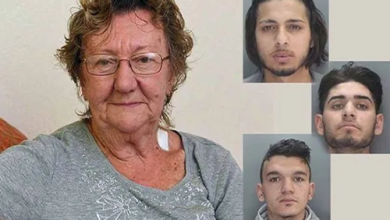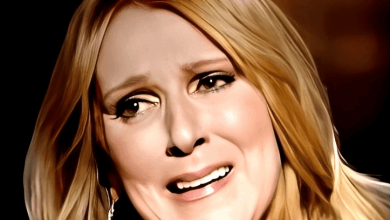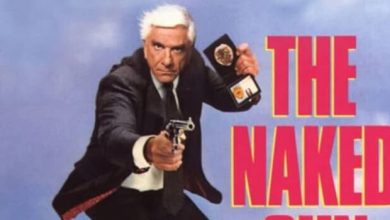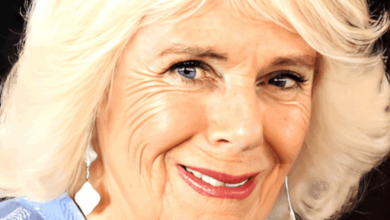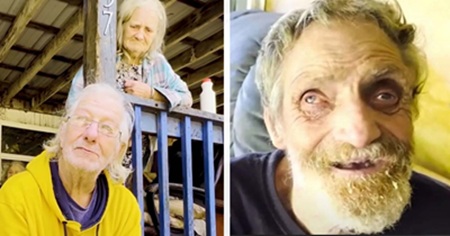
“Researcher who discovered the country’s most inbred family says they’ve been dishonest with him from the start.”
In 2004, photographer and filmmaker Mark Laita made a discovery that would eventually make him known around the world.
While traveling through the rural hills of West Virginia, he came across the Whittaker family, a group of relatives living in extreme poverty and isolation outside a small town called Odd.
What began as a photo project would later turn into one of the most widely discussed and controversial documentaries ever published online.
The Whittakers were soon labeled by the media as “America’s most inbred family.” Their story shocked millions of viewers when Laita released his YouTube documentaries on his channel Soft White Underbelly.
The videos showed a family living in run-down conditions, communicating through grunts and fragmented speech, and displaying a variety of unusual physical and mental traits.
A Family With a Troubled Past
According to local history and interviews with relatives, the Whittaker family had experienced generations of inbreeding among close relatives, including first cousins and even siblings.
Their complicated family tree dates back to the early 1900s.
Two twin brothers, John and Henry Whittaker, were born in 1897. Later, John married his first cousin Ada, and the two had nine children, one of whom was Gracie Irene Whittaker, born in 1920.
Henry, on the other hand, married a woman named Sally, and together they had seven children, including a son named John, born in 1913.
In 1935, these two bloodlines merged once again when John (Henry’s son) and Gracie (John’s daughter) — first cousins — married each other.
The couple went on to have fifteen children, many of whom displayed significant mental and physical disabilities.
Over time, these genetic complications were passed down through generations, resulting in a family with clear developmental challenges and unusual features.
This genetic history is what led researchers and viewers alike to brand the Whittakers as “America’s most inbred family.”
Life in Odd, West Virginia
The Whittakers live in Odd, a small, isolated rural town surrounded by dense forest and narrow dirt roads. Their home is a modest, deteriorating house filled with clutter, broken furniture, and scattered family belongings.
The family has lived there for decades, largely disconnected from the outside world.
When Mark Laita first approached the Whittaker home, he was warned by locals to be cautious. People told him that outsiders rarely visited the area — and those who did were often met with suspicion or aggression.
During his first encounter, one of the Whittaker men even pulled a gun on him, forcing Laita to leave immediately.
Despite that frightening introduction, he eventually gained their trust and began documenting their lives over several visits spanning many years.
In his documentary, Laita introduced viewers to family members like Ray, Betty, Larry, Lorene, and Lorene’s son Timmy.
The film revealed the family’s day-to-day life, showing how they interacted, how they survived, and how they cared for one another despite their circumstances.
Many viewers were deeply moved, while others felt disturbed or conflicted about the ethics of showing their lives so publicly. Still, the videos reached tens of millions of views, turning the Whittakers into an unexpected online phenomenon.
“It Might Be Coal Mining”
When Laita began asking the family questions about their background, he discovered that they had little understanding of genetics or the concept of inbreeding.
At one point, he asked a family member named Kenneth why several members of the family appeared to have eyes that didn’t face directly forward. Kenneth replied, “Might be coal mining.”
That response highlighted the family’s lack of awareness about their genetic history and the possible consequences of intermarriage within their bloodline.
A Bond Built on Trust — and Betrayal
Despite the difficulties, Laita continued to visit the Whittakers for years, forming what he believed to be a sincere friendship.
He often brought them food, clothes, and money, and later helped them raise funds through GoFundMe, which collected thousands of dollars from supporters who wanted to help improve the family’s living conditions.
However, that trust was shaken in March 2024, when Laita received heartbreaking news — or so he thought. He was told that Larry Whittaker, one of the family’s most well-known members, had died from a possible heart attack.
Laita announced the death on his YouTube channel, expressing genuine grief. “Larry was always a great dude to me,” he said. “He was always really nice — a standup guy.
He and Betty really ran the show very well. Larry will be greatly missed. It’s going to be hard on Betty now.”
Wanting to help, Laita donated $1,000 to support what he believed was Larry’s funeral. But soon after, shocking news emerged — Larry was still alive.
A YouTube video titled “The Death of Larry Whittaker” showed Larry sitting outside his home, smiling and very much alive. It quickly became clear that someone in the family had deceived Laita in order to get money.
“They’ve Been Lying to Me All This Time”
Laita learned the truth through the video itself and later confirmed that the money he had given was received by Larry’s daughter, BJ. She later admitted that she had lied about her father’s death.
In a tearful confession, BJ apologized, saying: “I’m very sorry for what I done. It was because I was on drugs, and you’ll do anything to get it. Yep… I was on heroin and crack cocaine.”
Although he felt betrayed, Laita responded with remarkable forgiveness. He did not turn his back on the family, even after the incident.
Instead, he continued to help them raise money, organize support, and share their story with honesty and empathy.
The Legacy of the Documentary
Mark Laita’s films have sparked global conversations about poverty, mental health, and the long-term effects of inbreeding, but they have also raised ethical questions about filming and publicizing vulnerable people.
Some critics accuse him of exploiting the Whittakers for views, while others believe he has given them a voice and support they never had before.
Laita himself has said that he sees his work not as exploitation, but as a way to show the realities of forgotten communities in America.
His project Soft White Underbelly continues to feature stories from people living on society’s margins — from addicts and the homeless to victims of trauma and generational poverty.
Despite everything that happened — including being lied to and deceived — Laita has expressed that he still feels compassion for the Whittakers. He continues to visit them, bring them supplies, and share their progress with the world.
“They’ve been lying to me all this time,” he once said in frustration. “But I can’t just walk away. These are real people living in a forgotten part of America. They need help, not judgment.”
Through his lens, the Whittaker family has become both a symbol of tragedy and resilience — a reminder of what isolation, poverty, and generational hardship can do to a family, but also of how humanity and compassion can still bridge even the deepest divides.
